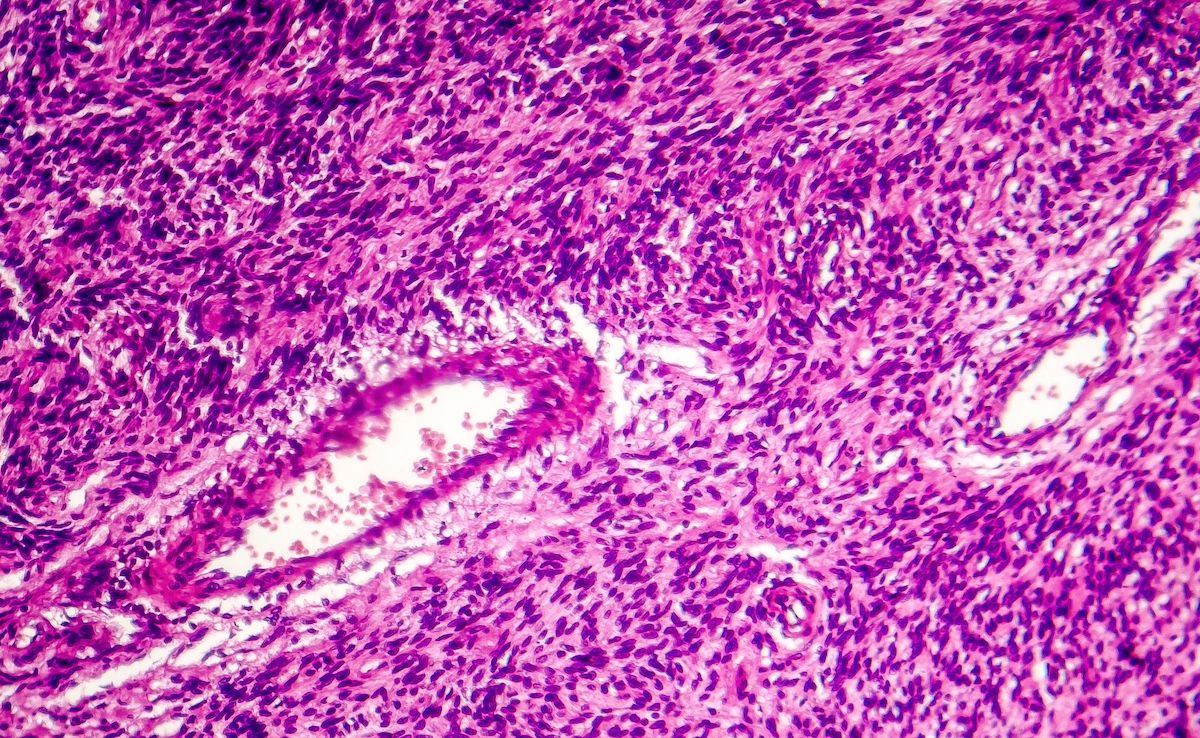News
Article
Young Breast Cancer Survivors Without Germline Mutation Show Lower Risk of Second Cancer
Author(s):
Young breast cancer survivors without a specific genetic mutation have a lower risk of developing second primary breast cancer within 10 years of diagnosis.
Young women with breast cancer | Image Credit: georgerudy - stock.adobe.com

Young patients that survived breast cancer without germline pathogenic variant have lower risks of developing second primary breast cancer (SPBC) within the first 10 years of diagnosis.
A prospective, cohort style study published in JAMA Oncology of 1297 women aged 40 years or younger diagnosed with early stage breast cancer (0-III) between 2006 and 2015. Women were recruited from 13 sites across the parts of the US and Canada.
Once baseline data was collected, participants were followed-up every 6 months over a 3-year period and then annually. The primary focus of the study was to see if a new breast cancer (contralateral or ipsilateral) was diagnosed at least 6 months after the first breast cancer diagnosis.
Out of the 1232 women with stages 0 to III breast cancer participating in the survey, the main analytic cohort included 685 women who had previously undergone unilateral mastectomy or lumpectomy as a primary surgery option. The majority of the population at baseline were White (82%) but also included Asian participants (9%), Black participants (4%), participants of Hispanic ethnicity (4%), and a few smaller portions of different races.
The entire survey was completed by most of the women participating (91%) with an average age of 36 years old. Some participants knew of their family health history data (n = 555) and found 12% of the population had first degree relatives while 50% noted second or third relatives with breast or ovarian cancer.
Most commonly, patients had a diagnosis of stage I or II primary breast cancer (n = 538) that included hormone receptor (HR)–positive (n = 526) and ERBB2-negative (n = 473) tumors. Out of the 685 women among the study population, 169 underwent previous treatments, such as neoadjuvant chemotherapy (25%), chemotherapy (74%), and radiation therapy (80%).
HR-positive tumors were reported in 526 patients and found 390 women among this population had endocrine therapy (ET) within 18 months. There were 577 participants that responded they had germline testing but only 33 had positive test results for pathogenic variants (PV), usually for BRCA1 or BRCA2 PV (n = 24).
Overall, 17 women out of the 685 had a SPBC, measured over an average of 10 years. From primary breast cancer diagnosis to SPBC, participants reported about 4.2 years. Over a 5-year cumulative incidence, SPBC was 1.5%, and 2.6% for a 10-year cumulative incidence.
In addition, 94 women reported distant recurrences while 45 had locoregional recurrences. The majority of the 17 women with SPBC developed contralateral disease (n = 15) but 2 also had ipsilateral disease.
The risk of SPBC among patients was significantly higher in germline PV carriers over 5 and 10 years (5.5%, 8.9%) than in noncarriers (1.3%, 2.2%). Germline PV carriers also had a greater risk of SPBC over time than patients diagnosed with in situ breast cancer versus invasive breast cancer over 5 years (6.2% vs 1.2%) and 10 years (10.4% vs 2.1%).
Patients with in situ primary breast cancer included those that received ET (n = 15) and those that did not receive ET (n = 20). The survey also noted patients with invasive primary breast cancer diagnosis that received ET (n = 375) and those that did not receive ET (n = 71).
Majority of those who reported their family history of breast or ovarian cancer but did not develop SPBC were 73%. Only 2 participants developed ipsilateral SPBC, who were both noncarriers of germline PVs and originally diagnosed with estrogen receptor– and progresterone receptor–positive invasive breast cancer. Data did not associate SPBC risk with noncarriers of PVs that have family history of breast or ovarian cancer.
Out of the 547 women who underwent bilateral mastectomies at or immediately after primary diagnosis had 4 participants report development of SPBC, 43 women with local recurrence, and 51 participants who developed metastatic disease.
It was found that women who had bilateral mastectomy had a higher risk of in situ disease compared with women who had lumpectomy or unilateral mastectomy (11% vs 6%). Additionally, women who had bilateral mastectomy were more likely to have a germline PV (26% vs 6%), report a family history of breast or ovarian cancer (59% vs 50%), report triple-negative BC (19% vs15%), and have grade III breast cancer (62% vs 56%).
The authors noted that the study is limited in diversity, which restricts generalizability and reduces precision due to small sample size. Additionally, questionnaires missed key lifestyle factors, potentially underestimating the population's risk.
Researchers concluded patients aged 40 years or younger with breast cancer that are noncarriers of PVs have a relatively low incidence of SPBC over a 5 to 10 year span. However, they highlight the importance of genetic testing in patients previously diagnosed with cancer.
"It will be important to continue examining rates of SPBC among these young patients as they get further from primary diagnosis," they concluded.
Reference:
Brantley KD, Rosenberg SM, Collins LC, et al. Second primary breast cancer in young breast cancer survivors. JAMA Onc. 2024;1-8. doi:10.1001/jamaoncol.2024.0286





